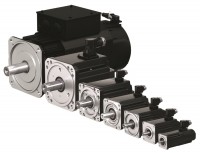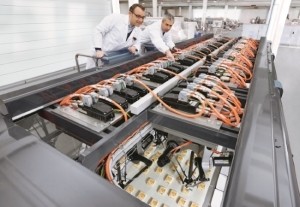Promotional Features
How can automation save waste in food packaging applications?
Reduction of waste in food production and packaging directly affects profitability and can enhance a company’s reputation through green credentials and certification. But what steps can be taken in a packaging automation project to eliminate or minimise waste? Bosch Rexroth takes a closer look.
‘Waste’ is normally viewed as product waste, but there are other less obvious sources of waste and these are the subject of lean production techniques. This can be, for example, wasted energy, wasted space or wasted time.
All modern machines are driven by electronic control systems like a PLC or motion logic controller. It’s common in automation to hear how fast a PLC is, but in reality that doesn’t help a business find out why a machine has stopped, or help it identify waste. Easy-to-use, efficient and open systems are needed in those situations, to allow a manufacturer to quickly identify problems, and easily monitor and optimise a facility.
Reduce product waste
Flexible production lines are a must for modern food manufacturers. Buying habits are changing; meaning lines must quickly swap pack/batch quantities, and be able to handle variable pack dimensions, with near zero waste on changeover.
Managing these requirements is not easy for an automation system. It must be able to cope with complex gear ratios without losing synchronisation over time, and have simple methods for setting offsets after a new job is loaded without actually moving the machine. Controls should take care of these requirements in the background, without needing anything from the operator, and make it simple for an engineer to implement and monitor, potentially reducing waste to zero.

On top of this, manufacturers want production data so they can optimise the plant, and know that the data they are collecting is accurate and not affected by changing environmental conditions. In short, the data must be valid over the working envelope of the production line. No one wants to invest in IoT and AI just to end up proving their servomotors report fluctuating data based on motor temperature or speed.
Reduce wasted energy
Today’s food packaging machines are increasingly driven electrically rather than pneumatically, which eliminates air leaks and compressed air costs. This directly reduces energy bills, but electrical systems also need to be energy-efficient. This starts in the design and installation of the power electronics where significant savings are achieved by choosing components with regenerative, energy storage or power optimisation features. For example, Rexroth’s HMV-R power supplies with near unity power factor, or IndraDrives and accessories that can share bus power. Choosing this type of component directly reduces your incoming mains current, which in turn reduces your electricity bill. They also minimise wasted heat by storing and reusing energy, which is particularly useful when driving reciprocal loads.
Monitoring electricity usage will give a business the data it needs to save even more waste. Manufacturers need to analyse when and why they are using the most electricity, and whether there are signs of issues on machines due to increased energy consumption. Bosch’s comprehensive monitoring and reporting package, called Phantom Energy, can reveal how much energy a business is using, whether issues are arising with equipment, how much energy has been saved and the resultant reduction in CO2 emissions. Instant access to the data is available via tablets or PCs.
Reduce machine footprint

Every operations director dreams of fitting more machines into the same factory space, as it directly increases return on the capital cost of the entire plant. To achieve this, it is important that a machine builder considers the overall layout of the packaging machinery. One option is to eliminate electrical cabinets and introduce product schemes that reduce cables and trunking.
Reduce wasted time
There is nothing more frustrating than being unable to find the simplest information on an automation system. Whether it’s caused by poor HMI design, having to use multiple software packages in parallel, or data that’s difficult to understand, the end result is downtime or, for a machine builder, late shipment and extra on-site commissioning costs when completing the installation.
Ease of use is a major contributor to waste reduction here; even the best-planned software project can overrun because simple tasks are far harder than they should be, or machines are down because the automation platform is difficult to understand and use. It’s hard to imagine that, in 2021, there’s still software out there that requires a company to design its own touchscreen keyboard, or displays position and speed in encoder counts by default instead of user-friendly units, or doesn’t offer easy implementation of protocols such as Modbus TCP/IP.
Rexroth's single intuitive software package for its entire automation portfolio brings all programming tasks and data into one place, making it easier to manage your project and debug code. All equipment uses real world units, so knowing where something is positioned or how fast it is moving is simple. The installation also comes with pre-written libraries for common applications and communication protocols, such as MQTT or Modbus TCP/IP, which significantly reduces the time needed for coding.
When this software is combined with a powerful oscilloscope or trace feature that can store data and trigger off faults, it becomes easy to track down the sequences that cause problems, for simple logging and debugging. All of which gets a machine up and running as soon as possible. These same tools are used to optimise performance and identify delays by, for instance, identifying and eliminating oscillations caused by mechanical frequencies in pick-and-place robots.
Staying safe while saving time
The other major area where wasted time can be prevented is in safety related control systems. By implementing drive-based safety that can achieve up to SIL3 or PLe, machine builders or engineering teams are able to create safe working solutions that are quickly activated and reset, so throughput can be increased without compromising safety.
If you would like to discuss how to minimise waste in your food packaging project, contact us at nhgbzngvba@obfpuerkebgu.pb.hx

